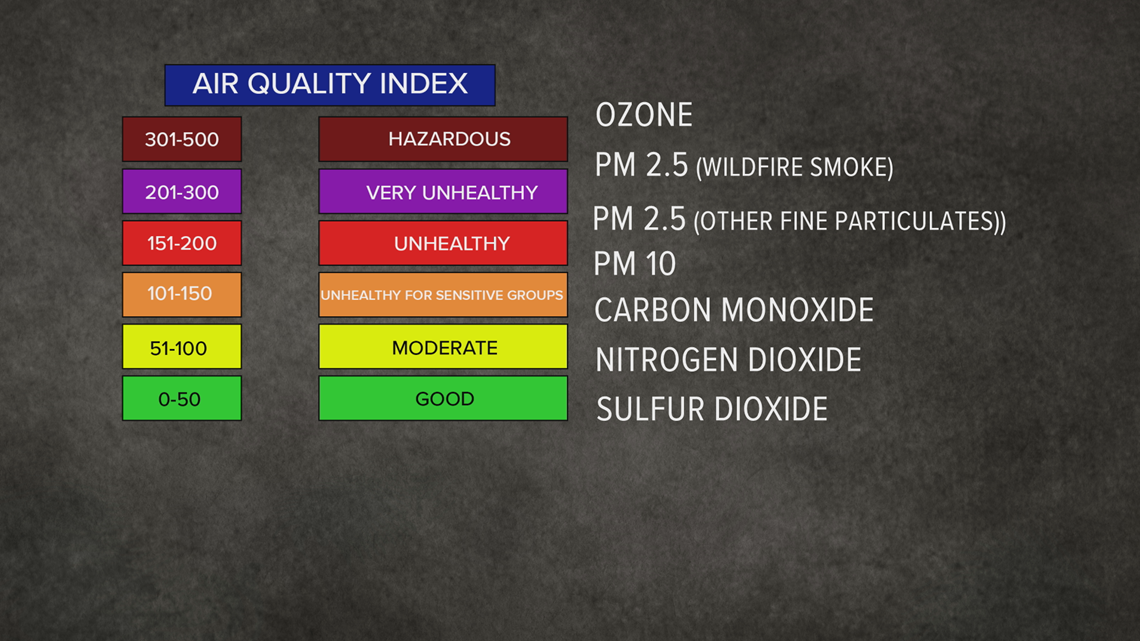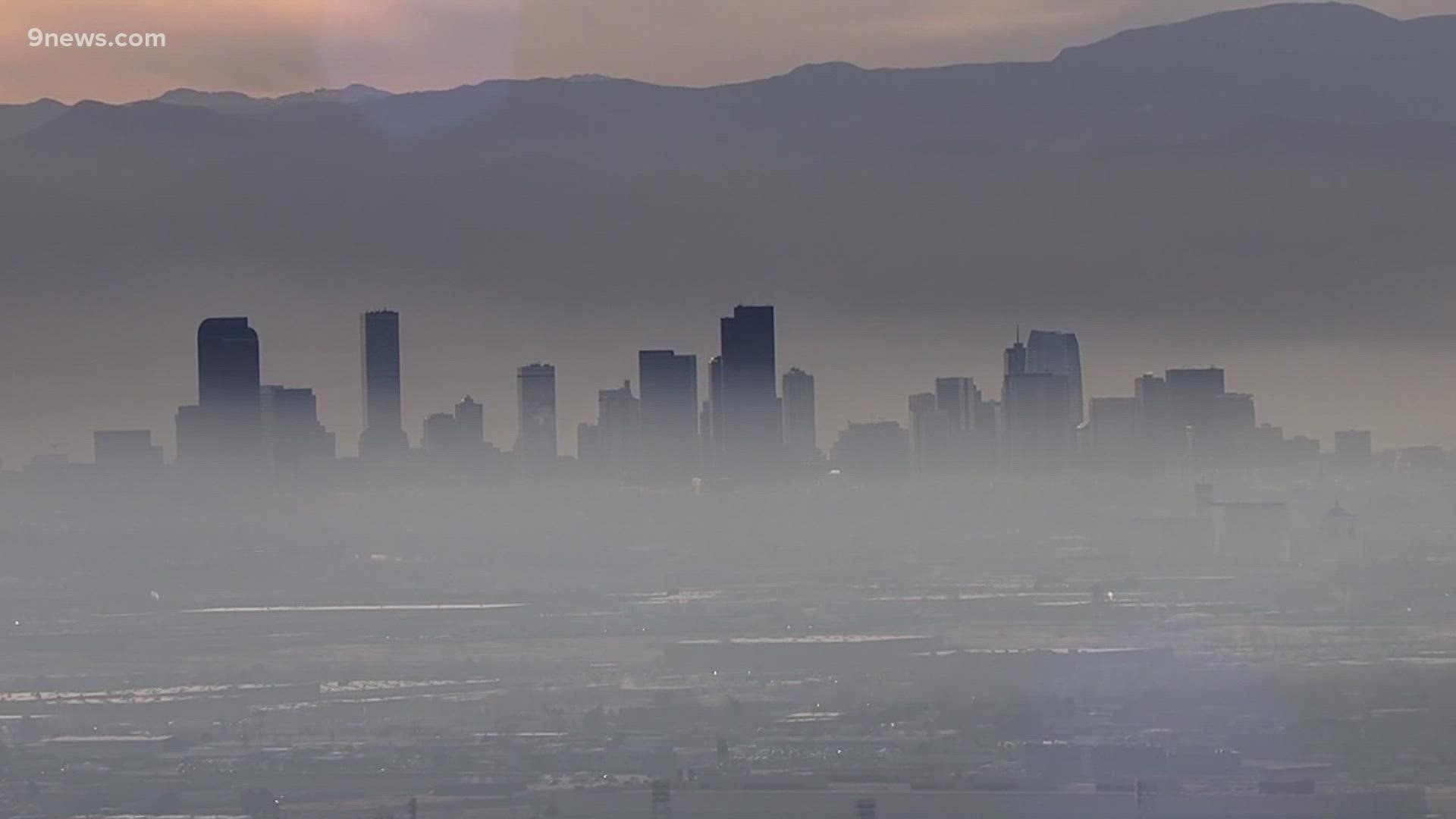DENVER — The Air Quality Index or AQI was developed so that all the different kinds of air pollution can be measured on the same scale.
When the AQI is forecast to break 100 for any pollutant, the Colorado Department of Public Health and Environment (CDPHE) issues an air quality alert. It's a category described as unhealthy for sensitive groups, which are people with lung or heart diseases, the elderly, children, and pregnant women.
When it breaks 150 for any pollutant, the air is considered to be unhealthy for all people. The AQI has been above 150 in Denver 21 times this summer.
If you have tried to track the air pollution this summer using the AQI, you may have found that every app or website you look at reports different numbers.


While not all apps reveal their methodology, some only make an estimate of what the AQI might be without using data from actual air monitors.
“Others have actually devised their own kind of air quality index and that can kind of make things very confusing for the public,” said Scott Landes, an air quality forecaster with CDPHE.
He recommends that you only use the AQI from the Environmental Protection Agency's (EPA) website which is airnow.gov or the health departments website at colorado.gov/airquality.
“And you’ll know you’re getting that information right from the source," said Landes. "We have regulatory data from our monitors, and we’re going to give you the information from the air quality index as it was devised by the EPA.”
Landes said the EPA’s standard for measuring the health impacts of air pollution is based on the length of time a person is exposed.
For example, wildfire smoke, which is included in PM 2.5 or particulate matter less than 2.5 microns in size, is based on a 24-hour time period. So, the AQI number you see is for the current hour and the previous 23 hours averaged together.
That means you don’t really know what level of exposure you had, until the day is over. Some apps try to shortcut that exposure to deliver a more real-time air quality reading, however, those numbers are just estimates.
“The EPA itself has devised what they call the NowCast. That’s an AQI that looks a bit more at the most recent hours,” said Landes.
He said even the EPA's Nowcast AQI number is just an estimate based on actual measurements from air quality sensors. It's usually the first thing you see now when you go to the EPA’s website.
He says it's useful information, because it can give you a better idea of how bad the air is at the moment, but it may not represent the full 24-hour exposure.
"One shortcoming might be when a cold front sweeps through the area," explained Landes. "The Nowcast AQI number will rapidly drop and make it look like everything is fine, while the actual AQI number shows you the true exposure."
Or it could work opposite, where a big plume of wildfire smoke moves through for five hours, raising the Nowcast AQI above 150, but the other 19 hours might be near a low 50 AQI.
The big numbers are shocking, but based on the EPA's standard, which is what they've deemed as acceptable exposure levels to wildfire smoke, the actual exposure to a person might just be moderate when averaged out over a 24-hour period.
The EPA's standard for ozone is measured over an eight-hour period.
Landes said there has been some talk about the CDPHE adding a similar product to the Nowcast.
"There are strengths and weaknesses with both methods," he said. "The Nowcast AQI is going to alert you quicker to drastic quick changes in air quality, but it may not represent the overall exposure levels very well."
He said it is important to make decisions based on the forecast and the alerts and not the AQI number that you see on your app. He said the forecast which is posted daily on the CDPHE website, and relayed by the National Weather Service (NWS), will let you know what the AQI number will be sometimes more than a day in advance.
SUGGESTED VIDEOS: Wildfires in Colorado

